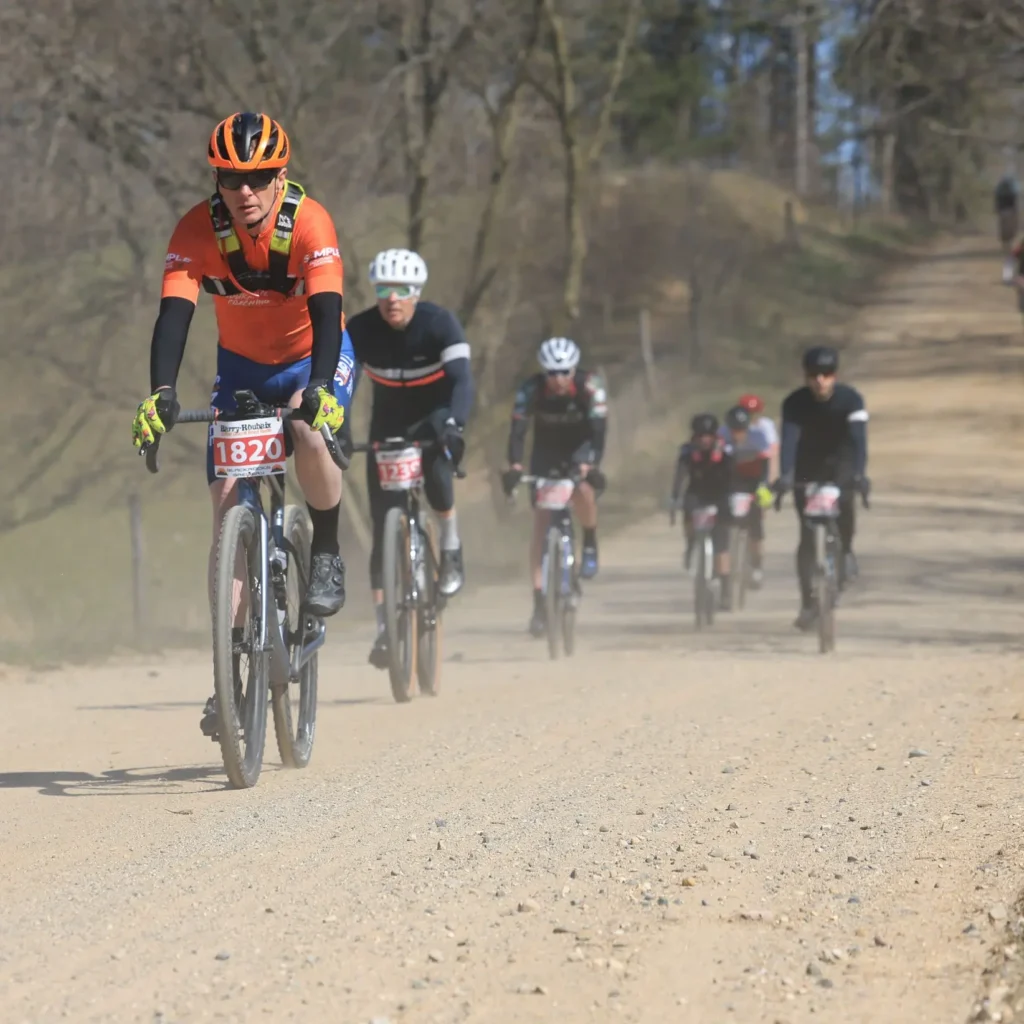
by Coach Paul Warloski
In all the conversation about Zone 2 training, one crucial piece often gets overlooked: the main reason we train in Zone 2 is to teach our body to burn fat as a fuel source.
The most effective way to do that?
Ride or run slowly enough so that you’re training in your Fat Max zone.
What Is Fat Max?
Fat Max—short for maximum fat oxidation—refers to the exercise intensity at which your body burns the greatest amount of fat per minute.
Our bodies burn a mix of carbohydrates, fat, and a small amount of protein all the time.
Think of them like sliders on a mixing board: as intensity increases, the carbohydrate slider goes up and the fat slider goes down.
At low intensities, fat takes the lead.
But there’s a sweet spot—the Fat Max zone—where your body hits its peak fat-burning efficiency.
The challenge? Knowing where that point is.
How Do You Find Your Fat Max?
The most accurate way to find your Fat Max is through metabolic testing in a lab.
This involves a graded exercise test where your breathing and gas exchange are analyzed to pinpoint the intensity at which fat burning is highest.
But for everyday endurance athletes, there are simpler, effective methods:
- The MAF Formula: Dr. Phil Maffetone, who we recently interviewed on The Athlete’s Compass podcast, popularized the formula 180 minus your age to estimate your maximum aerobic heart rate. This is a practical starting point for finding your Fat Max zone.
- Talk Test: You should be able to carry on a full conversation without gasping for air. If you can easily talk, you’re likely close to the right zone.
- Nasal Breathing: If you can breathe through your nose comfortably, you’re probably in the right range.
- Heart Rate Zones: Typically, Fat Max is found below your first lactate or ventilatory threshold, often aligning with the upper end of Zone 2—about 60–75% of your max heart rate, depending on your fitness.
But It Feels Slow—And That’s Okay
Training at Fat Max often means running or riding much more slowly than you’re used to.
It may even mean walking during your run to keep your heart rate in the target zone.
On the bike, it might mean spinning along while getting passed by everyone.
That’s not easy on the ego.
But here’s the mindset shift: These are not junk miles.
These are high-quality metabolic training miles that build endurance and long-term resilience.
Why Fat Max Matters
Fat is a more efficient fuel than carbohydrates in terms of how much energy it can produce per gram—plus, we all have an almost unlimited supply of fat compared to our relatively small glycogen stores.
By training your body to use more fat as fuel:
- You’ll preserve glycogen for when it’s really needed—like climbs, sprints, or the final miles of a race.
- You’ll build mitochondrial density, improving your endurance and recovery.
- You’ll become more metabolically flexible, meaning your body can switch between fuel sources more efficiently.
How to Train in the Fat Max Zone
Here are a few practical steps:
- Aim for 2–4 sessions per week in your Fat Max zone
- Go for 45–90 minutes, or more, at a conversational pace. I’ve been working on extending my long rides up to five hours in this zone.
- Consider doing these sessions in a fasted state or without carbohydrates to enhance fat adaptation (just bring backup fuel in case you bonk!)
- Try low cadence work (like 60 rpm on the bike) to increase muscular engagement while keeping heart rate low
Over time, you’ll notice that you can go faster at the same heart rate—this is a sign that your fat-burning efficiency is improving.
Embrace the Slow
Fat Max training isn’t flashy.
It doesn’t leave you breathless or give you a rush of adrenaline.
But it’s a critical foundation of endurance performance, especially for cyclists and runners over 40.
So, embrace the slow.
It’s not weakness—it’s wisdom.
And it’s the metabolic secret to longer, stronger performances.
Three Things to Know About Fat Max
1. Fat Max is the Zone Where You Burn the Most Fat Efficiently
Fat Max refers to the intensity at which your body burns the highest amount of fat per minute. It typically falls below your first ventilatory or lactate threshold and aligns with the upper end of Zone 2. Training in this zone improves metabolic flexibility and endurance.
2. Training at Fat Max Requires Going Slower Than You Think
To stay in the Fat Max zone, you’ll likely need to slow down, sometimes significantly. This might mean walking during runs or riding your bike at a pace that feels almost too easy. But these low-intensity sessions are critical for long-term performance and fat adaptation.
3. Fat Max Training Builds Endurance
By improving your ability to burn fat, you conserve glycogen stores for when they’re most needed, like hard efforts or the end of a race. This makes you more durable, efficient, and better equipped for long endurance events.
Need more?
Unlock the secrets to mastering gravel racing with our FREE Guide to Gravel Racing! Get yours here.
SIGN UP FOR A FREE Virtual Coffee so we can discuss your goals, ask questions, and talk about making your endurance training more effective, fun, and Simple.
Paul Warloski is a:
- USA Cycling Level 1 Advanced Certified Coach
- RRCA Running Coach
- Training Peaks Level 2 Coach
- RYT-200 Yoga Instructor
- Certified Personal Trainer




